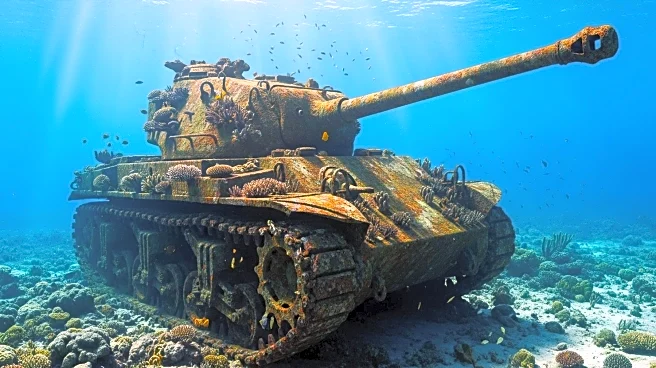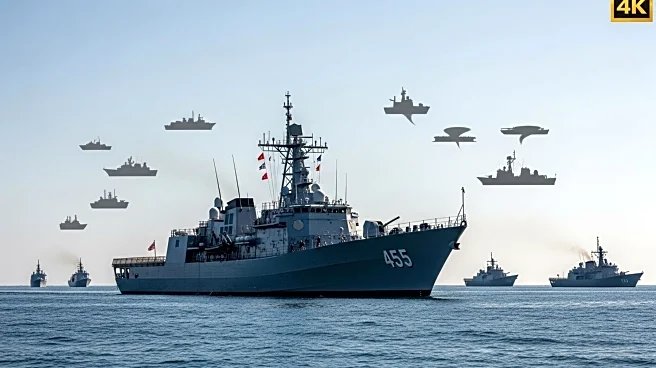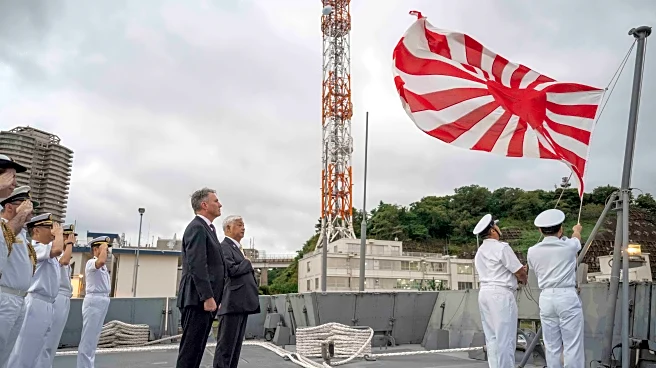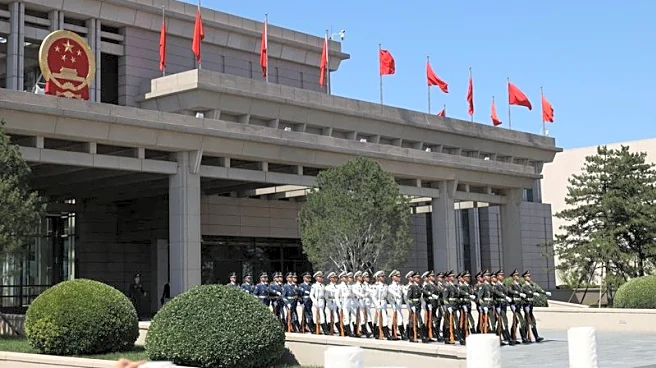What's Happening?
Eighty years after the end of World War II, the Pacific region continues to grapple with the environmental and health impacts of wartime remnants. The conflict left behind thousands of sunken warships, aircraft, and unexploded ordnance, which now pose significant risks to marine ecosystems and human health. These remnants leak toxic substances such as fuel and heavy metals into the environment, threatening biodiversity and potentially entering the food chain. The Pacific islands, which served as battlegrounds during the war, are particularly affected, with an estimated 3,800 wrecks still lying on the ocean floor. The ongoing degradation of these materials highlights the enduring environmental harms of conflict, as they continue to pollute fragile ecosystems and endanger local communities.
Why It's Important?
The presence of WWII remnants in the Pacific has significant implications for environmental and human health. Toxic pollutants from these remnants can accumulate in marine life, posing risks to biodiversity and potentially affecting human populations through the food chain. Communities in regions like Palau, Papua New Guinea, and the Solomon Islands face ongoing dangers from unexploded ordnance, which can be unearthed during everyday activities. The health impacts of exposure to wartime contaminants are concerning, with studies suggesting links to serious health issues such as birth defects and cancer. Additionally, climate change exacerbates these risks, as extreme weather events can shift hazardous materials, complicating efforts to locate and clear them. Addressing this legacy requires coordinated action to remove dangerous materials, restore ecosystems, and monitor health impacts.
What's Next?
Efforts to mitigate the environmental and health risks posed by WWII remnants in the Pacific are ongoing but require further support. Programs like Operation Render Safe, led by the Australian Defence Force, aim to remove war remnants, but more comprehensive action is needed. Regional partners, including Australia, New Zealand, Japan, and the United States, have the opportunity to lead initiatives that invest in environmental cleanup and support affected communities. Listening to Pacific voices and incorporating their knowledge and experiences into response strategies is crucial. As the 80th anniversary of WWII offers a moment for reflection, it also presents an opportunity to address the toxic legacy of war and take meaningful action to protect ecosystems and communities.
Beyond the Headlines
The long-term implications of WWII remnants in the Pacific extend beyond immediate environmental and health risks. The presence of these toxic materials raises ethical questions about historical responsibility and the need for remediation. The slow pace of cleanup efforts highlights the challenges of addressing war's legacy, particularly in regions with limited resources. Additionally, the impact of climate change on these remnants underscores the interconnectedness of global issues, as rising sea levels and extreme weather events increase the risks associated with wartime materials. Addressing these challenges requires a holistic approach that considers environmental, social, and historical dimensions, ensuring that affected communities are central to the response.













